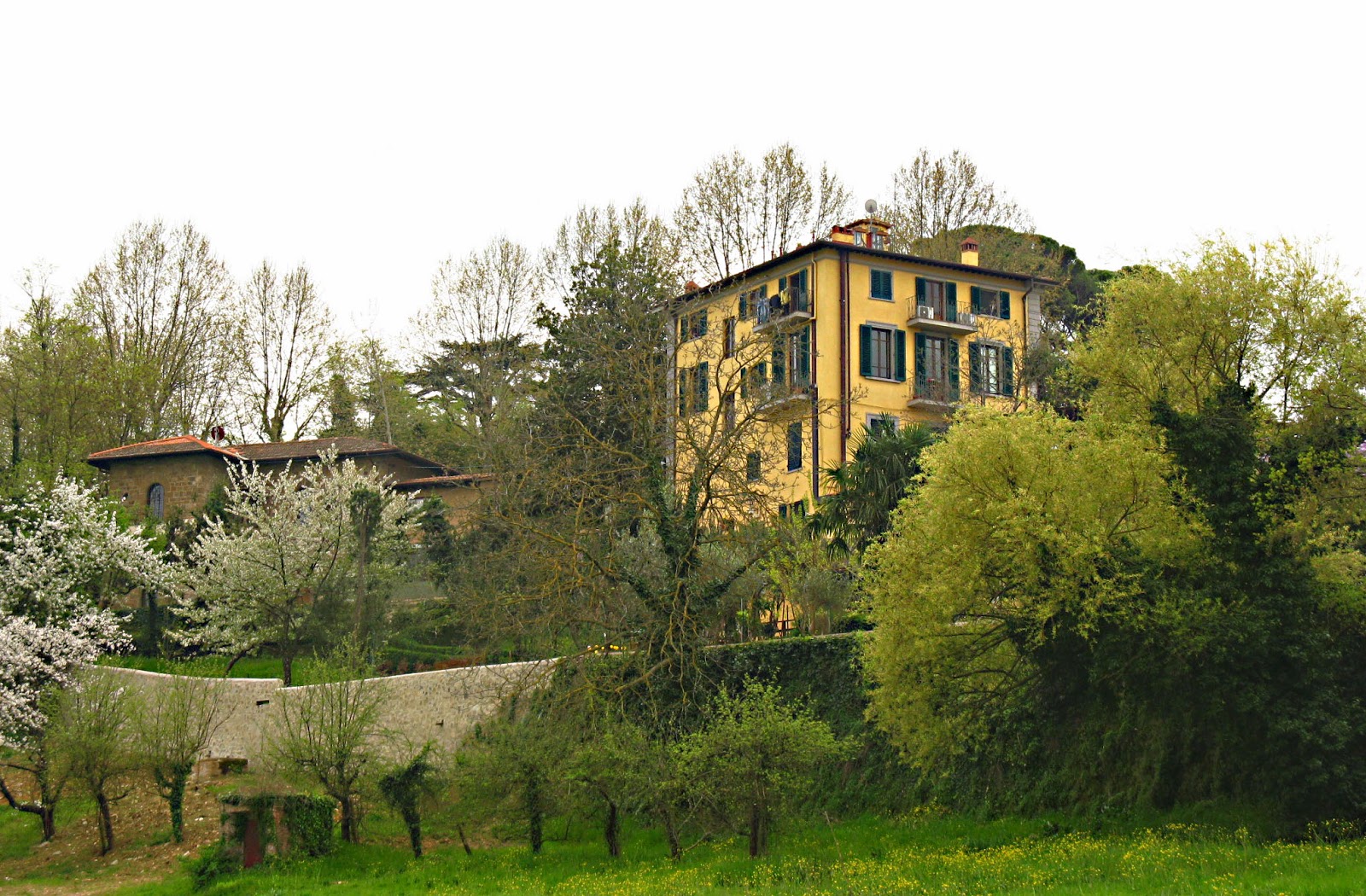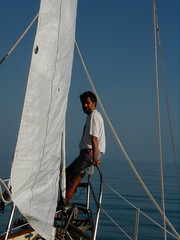 We arrived by train at the Stazione Centrale di Santa Maria Novella and were able to recognize the typical Florentine style of the Gothic church adjacent to the train station: we had arrived in Florence.
We arrived by train at the Stazione Centrale di Santa Maria Novella and were able to recognize the typical Florentine style of the Gothic church adjacent to the train station: we had arrived in Florence. It is always thrilling to arrive in a new place and we made our way to our hotel on Borgo Pinti, enjoying the new sights, looking forward to finally discover this city...we heard so much about Florence! and here we were! Our apartment was well located, 5 minutes from the Duomo, with great little shops lining up the street.
It is always thrilling to arrive in a new place and we made our way to our hotel on Borgo Pinti, enjoying the new sights, looking forward to finally discover this city...we heard so much about Florence! and here we were! Our apartment was well located, 5 minutes from the Duomo, with great little shops lining up the street.  Soon after the checking in formalities, we made our way to the Duomo. We saw so many pictures of the Duomo that we felt we know it...an experience not unlike the one we had in Rome seeing the Vatican for the first time! Meandering the streets from Borgo Pinti, we suddenly saw the dome of the cathedral... and were struck by its size and its imposing presence.
Soon after the checking in formalities, we made our way to the Duomo. We saw so many pictures of the Duomo that we felt we know it...an experience not unlike the one we had in Rome seeing the Vatican for the first time! Meandering the streets from Borgo Pinti, we suddenly saw the dome of the cathedral... and were struck by its size and its imposing presence. And also by the beauty of its structure, namely the varied colours of the wall structures (green, white and red marble) which we believed to be only in black and white ...
If the exterior façade of the duomo is strikingly intricate and sophisticated, its interior is rather sobre and modest with the exception of the mosaic floor and the frescoes decorating the cupola. Ah, this famous cupola: while the construction of the Duomo began in 1296, it stood "domeless" until 1420 before the erection of its cupola was undertaken by Brunelleschi (commissioned by Cosimo de Medici). It is fascinating to read about the engineering challenges faced by Brunelleschi and how he resolved them. He was to become the foremost architects of the Renaissance.

We did not climb the 4000 some stairs leading to the top of the cupola, but some people do and I found this photo taken from the top of the cupola looking down in the cathedral...amazing!
The frescoes were by Vasari who died before being able to finish the work; this amazing project illustrating the last judgment had to be finished by Zuccari in 1574.
The campanile The bell tower by Giotto remains, together with the huge dome one of the most striking views of the town. The famous painter, Giotto, was in fact also the architect of the project for the bell tower, although by the time of his death (1337) only the lower part had been completed. The works continued under the direction of Andrea Pisano (c. 1290-1349) and Francesco Talenti (not. 1325-1369) who completed the project.
 With the exception of the Duomo and its campanile, Dante Alighieri would have felt at home in this medieval part of Florence. The Badia Fiorentina (church), here on the right, where he caught his first glimpse of his beloved Beatrice, the Bargello (1255) below and the Baptistery, and even the small streets leading to his native house, all this "décor" has pretty much remained authentic.
With the exception of the Duomo and its campanile, Dante Alighieri would have felt at home in this medieval part of Florence. The Badia Fiorentina (church), here on the right, where he caught his first glimpse of his beloved Beatrice, the Bargello (1255) below and the Baptistery, and even the small streets leading to his native house, all this "décor" has pretty much remained authentic.
Another area of Florence that we liked to explore was San Marco, where the Hospital of the Innocents, the convent San Marco, the university buildings of Earth science and their botanical garden and the Galleria dell'Accademia (oldest Art school in the world) are located. This part of Florence used to be "outside" the nucleus of Florence and was the location of the Medici "farm, where their elephants, giraffes and lions were kept.
It is in Florence that we celebrated our 40th anniversary. That day, we booked tickets to visit the Uffizi, build and decoreated by Vasari to accommodate the administration of Florence between 1560 and 1580. Today, it is one of the richest museum of the world.
 After this intellectual nourishment, we had to look after our physical needs...food please! We began with a sumptuous pre-dinner celebration with Chianti wine, Parma prosciutto and spicy mortadella, olives and mushrooms, focaccia! Simple but so delicious... and later on, we made our way to Il Contadino for more Chianti and pasta!
After this intellectual nourishment, we had to look after our physical needs...food please! We began with a sumptuous pre-dinner celebration with Chianti wine, Parma prosciutto and spicy mortadella, olives and mushrooms, focaccia! Simple but so delicious... and later on, we made our way to Il Contadino for more Chianti and pasta!
And limoncello, compliments of the restaurant!
(The world is small ! the woman who took our picture was a Canadian, from the Kingston area...visiting Florence!)
Our last day in Florence was spent revisiting the Piazza dei Signoria admiring the David of Michelangelo and the fountain of Neptun created by Ammanati in 1575 and decorated with Naiades of Jean de Bologne to commemorate Florence's naval victories.
We did not tire from strolling along the Arno river and enjoying the sight of Ponte Vecchio.

 We explored the Oltrarno (the other side of the Arno river)... the side with Palazzo Pitti, Santo Spirito church, the Boboli gardens, and quiet neighbourhoods. One of those little street, Costa San Giorgio, harboured the house in which Galileo Galilei made his first celestial observations...that cost him a great deal of difficulties with the Catholic Church. His house arrest took place here.
We explored the Oltrarno (the other side of the Arno river)... the side with Palazzo Pitti, Santo Spirito church, the Boboli gardens, and quiet neighbourhoods. One of those little street, Costa San Giorgio, harboured the house in which Galileo Galilei made his first celestial observations...that cost him a great deal of difficulties with the Catholic Church. His house arrest took place here.Happy to find places without crowds, we pursued our promenade along gardens and enjoyed the tuscan spring!
Arrivederci Firenze, we will be back...






















1 comment:
Thank you. I enjoyed that. I hope to see all these beautiful sites. And to drink and eat like the Italian...
Have fun on this coming trip. We will enjoy the blog later...
Ciao.
Post a Comment